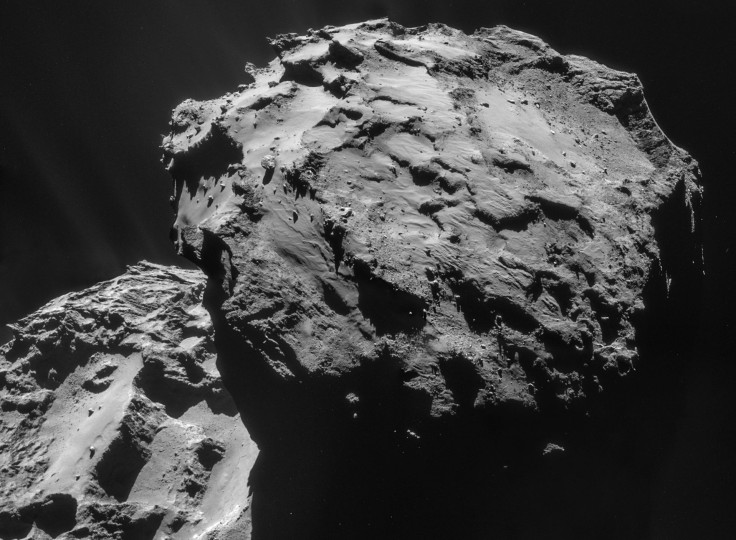Rosetta Reveals New Secrets About Comet 67P, Says It’s ‘Pouring’ More Water Into Space

New details provided by the European Space Agency's (ESA) Rosetta spacecraft has revealed a significant increase in the amount of water “pouring” out of the comet 67P/Churyumov-Gerasimenko, on which the mission’s Philae lander touched down in November.
According to scientists, the 2.5-mile-wide comet was releasing about 1.2 liters of water into space every second at the end of August last year. A study based on the observations made by NASA’s Microwave Instrument for Rosetta Orbiter (MIRO) aboard the spacecraft, was published in a special Thursday issue of the journal Science.
“In observations over a period of three months [June through August, 2014], the amount of water in vapor form that the comet was dumping into space grew about tenfold,” Sam Gulkis, principal investigator of the MIRO instrument at NASA, and the study’s lead author, said in a statement.
The MIRO instrument, a small and lightweight spectrometer, can map the abundance, temperature and velocity of water vapor and other molecules released by the comet’s nucleus. The instrument can also measure the temperature about one inch below the surface of the comet’s nucleus.
In addition to the water vapor released by 67P/Churyumov-Gerasimenko, the study also revealed that the comet also spews out gas from specific locations and during particular times of its “day.” A large portion of the gas that was ejected between June and September last year occurred from the comet’s “neck” -- a region that connects the comet’s two lobes of different sizes, called its “body” and “head” -- and these emissions occurred during its afternoon, according to the study.
“That situation may be changing now that the comet is getting warmer,” Gulkis said. “MIRO observations would need to be carefully analyzed to determine which factors in addition to the sun’s warmth are responsible for the cometary outgassing.”
In another study about comet 67P/Churyumov-Gerasimenko, scientists said the comet’s atmosphere, or coma, is much less homogenous than previously thought and that the amount of gas released by the comet varies significantly over time.
The ESA has also released new images of the comet, showing rock formations, dubbed “goosebumps,” which are considered to be the building blocks of the comet. The new images also showed a crack developing in the comet’s “neck,” leading scientists to speculate that the comet could one day break apart.
Rosetta is currently about 107 million miles from Earth and about 92 million miles from the sun. The spacecraft is the first mission to rendezvous with a comet and deploy a lander on its surface.
© Copyright IBTimes 2024. All rights reserved.












